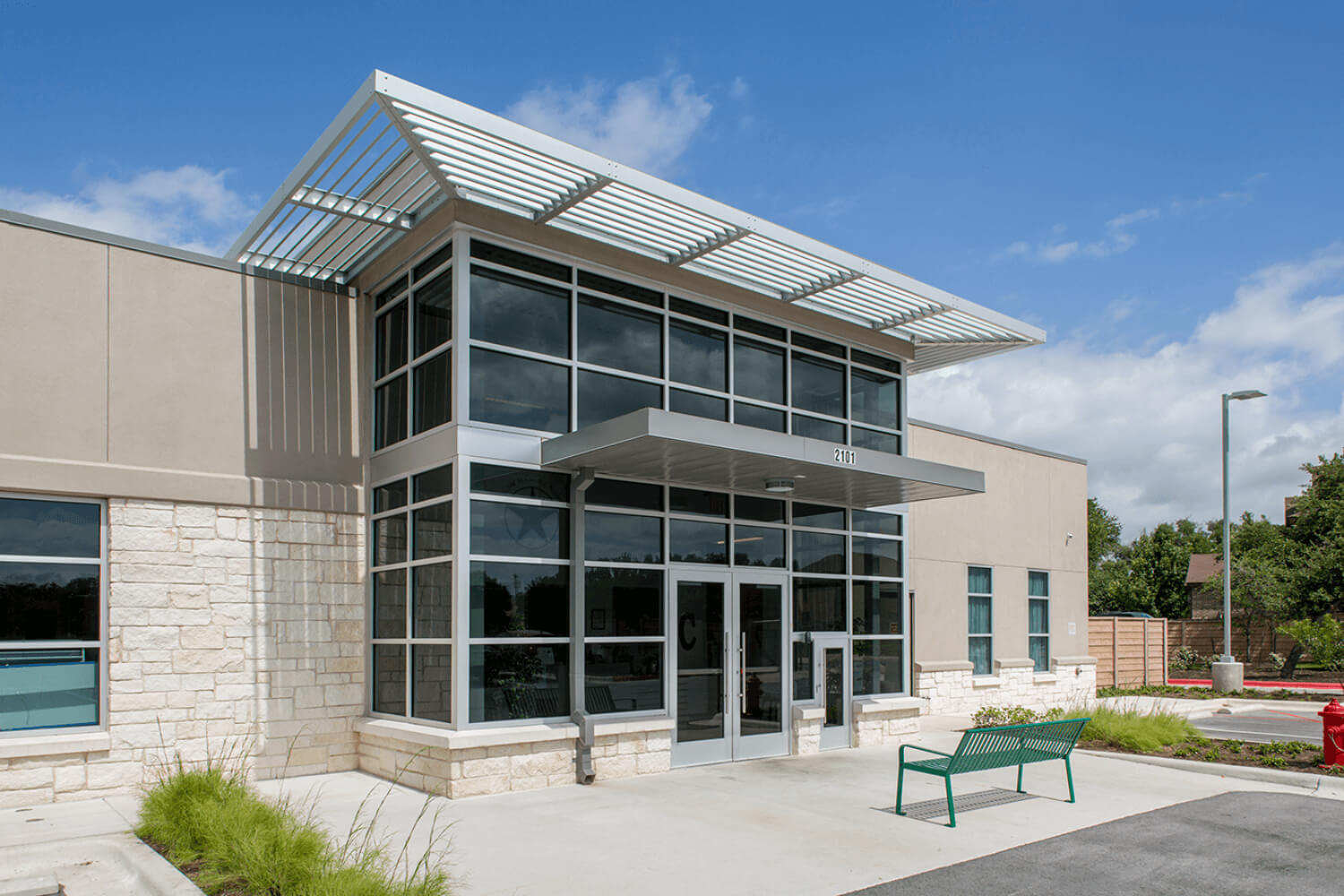The world of educational architecture is currently undergoing an exciting transformation. Traditional learning spaces are evolving to become more than just places for academic instruction and rote learning. Instead, today’s school designs focus on promoting holistic development and recognizing the impact that physical spaces can have on learning, well-being, and sustainability.
In this blog, we’ll explore some of the top school design trends that are reshaping how modern schools are being designed, built, and experienced so that you can have a better idea of what the future of education architecture looks like.
Blended, Flexible Spaces:
Modern school architecture embraces the concept of blended, flexible spaces. Moving away from the traditional, rigid classroom setup, these spaces are designed to be fluid and adaptable. They incorporate home-like elements, such as comfortable seating and relaxed atmospheres, to support different learning styles and activities. They’re also versatile, catering to group discussions, individual study, and even remote learning.
Such adaptability is crucial in a world where the boundaries between home and school learning are becoming increasingly blurred. These designs not only support various teaching methods but also create environments where students feel at ease, engaged, and motivated.
Tackling Socio-Economic Disparities:
Today’s school designs are more aware of the socio-economic differences among students. Schools are now including physical spaces designed to specifically support underprivileged students, including everything from storerooms for necessities to spaces for counseling and academic assistance. These inclusive designs ensure that all students have equal access to necessary resources, helping to create a supportive community that can address the challenges faced by students from diverse backgrounds.
Equity, Diversity, and Inclusion:
The design of modern educational spaces is becoming increasingly focused on equity, diversity, and inclusion. This involves creating non-gendered restrooms, locker rooms, and spaces that cater to various learning and physical needs, as well as creating spaces that are welcoming and accessible to students from diverse cultural and social backgrounds.
In the past, many educational spaces were designed with a one-size-fits-all approach, which often excluded marginalized groups and perpetuated inequalities. However, with a growing emphasis on inclusivity, designers are now incorporating principles of Universal Design into the planning and design of educational spaces.
Improved Ventilation:
The importance of air quality in schools has become a top priority, especially following recent global health concerns. There’s been a huge push to improve ventilation systems, particularly in older buildings that might not have been designed with ventilation in mind.
This includes installing advanced filtration systems, maximizing natural ventilation, and using sustainable materials that improve indoor air quality. These improvements are vital for the health and well-being of students and staff, and they also contribute to better concentration and educational outcomes for students.
Culturally Responsive Designs:
Schools are also being designed to reflect their cultural and geographical contexts. This involves integrating the unique cultural, historical, and social aspects of the community into the school’s architecture, such as by using traditional building materials and incorporating local design elements.
For example, a school in an urban area might incorporate elements of the city’s architecture, such as glass and steel, to reflect its modern and fast-paced environment. On the other hand, a school in a rural area might use natural and sustainable materials, like wood and clay, to blend in with the surrounding natural landscape.
In addition, schools are being designed to showcase the cultural diversity of their students. This could include incorporating artwork and symbols from different cultures throughout the school, as well as providing spaces for students to display their cultural traditions and celebrate their heritage.
Such designs are helping schools become an integral part of the great community, helping to foster a sense of pride and belonging among students.
Sustainable and Eco-Friendly Architecture:
It should come as no surprise that sustainability is a major focus in modern school architecture. This goes beyond using eco-friendly materials; it’s about creating learning environments that are in harmony with their natural surroundings. Features like green roofs, solar panels, and energy-efficient designs are becoming more common, whereas traditional features like large windows and open floor plans are being used to maximize natural light and encourage a connection to the outdoors. Additionally, school buildings are being designed to promote more sustainable habits among students, such as recycling and conserving resources.
Bring These Ideas to Life With Fuse Architecture Studio
If you’re looking to incorporate these forward-thinking design concepts into a school design of your own, consider reaching out to Fuse Architecture Studio today. As a leading architecture firm in Austin, Texas, we have extensive experience designing innovative and functional educational facilities, from kindergartens to universities. Our team of experienced architects and designers will work closely with you to bring your vision to life and create a cutting-edge learning environment for your students.
Contact us today to learn more about our services and how we can help you create a school design that meets your needs!

